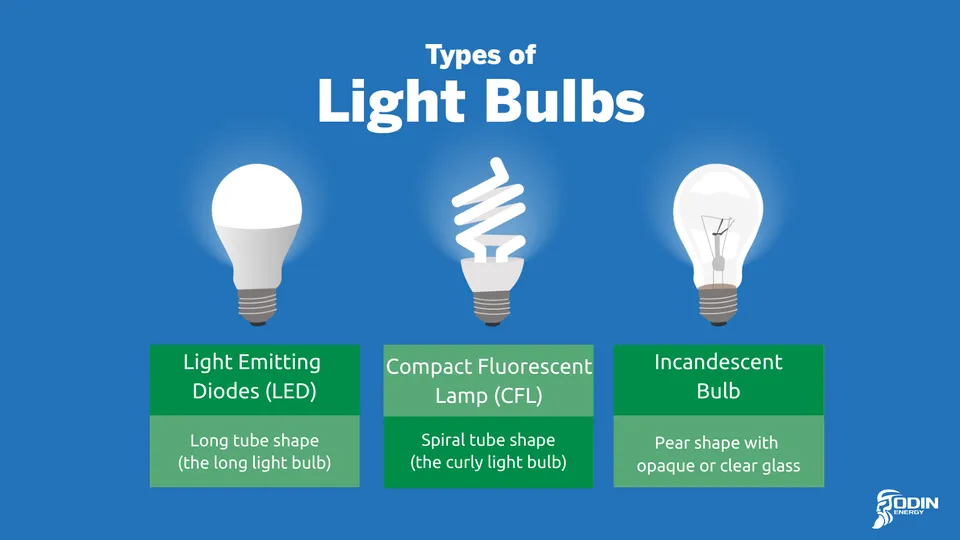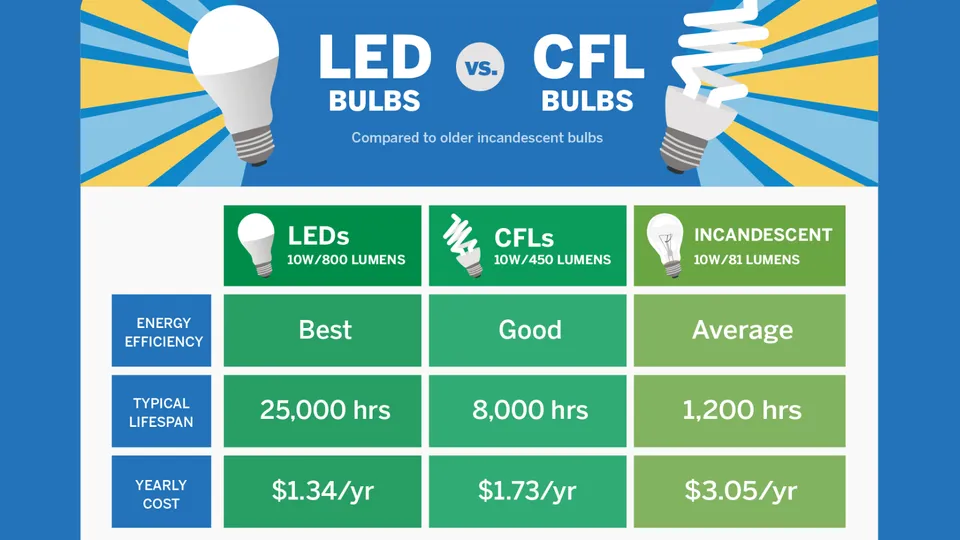LED, CFL, and Incandescent Bulbs: Which One Is The Most Energy-Efficient?
We know what you’re thinking, “Do my bulbs actually matter? If so, what’s really the difference between them?” We’re glad you asked! In short, the answer is a BIG yes they matter! And we will explain why they matter below.
To understand why and how they are impactful, it’s important you understand the difference between them first.
Understanding energy-efficient light bulbs

- LED (light-emitting diode) bulbs are a newer technology. Once only available as a longish tube, bulbs now come in nearly every shape and size, including flexible ropes for decorating.
- CFL (compact fluorescent lamp) bulbs are commonly manufactured as a spiral tube connected to a screw-in ballast or base. Newer technology replaces the curly light bulb with one that looks like the traditional incandescent bulb. They also now come in round and flame shapes.
- Incandescent bulbs are the familiar pear-shaped or round screw-in light bulbs that have been marketed since Thomas Edison perfected the carbon filament bulb in 1879.
How do they perform?

Which is more energy-efficient: CFL, LED, or Incandescent?
- LED (light-emitting diode) bulbs can last anywhere from 20,000 to 50,000 hours, or up to five times longer than any comparable bulb on the market.
- CFL (compact fluorescent lamp) bulbs are four times more efficient and last up to 10 times longer than incandescents. A 22 watt CFL has about the same light output as a 100 watt incandescent. CFLs use 50 – 80% less energy than incandescents.
- Incandescent bulbs spend roughly 90% of the energy is wasted as heat, with only 10% of it going toward light.
Energy Efficiency Winner: LEDs
CFL’s use 25-35% less energy than traditional light bulbs, or incandescent bulbs, use. This is good, but not great. LED’s, on the other hand, use 75% less of the energy than incandescent bulbs use. This means that LED bulbs are incredibly energy efficient. Additionally, CFL bulbs release almost 80% of their energy as heat, while LED bulbs emit very little to no energy as heat, which increases their efficiency even more.